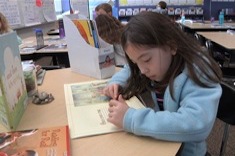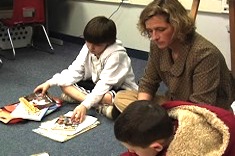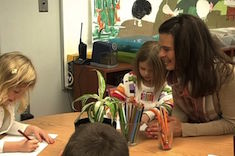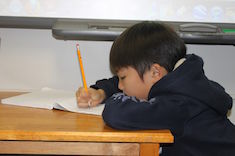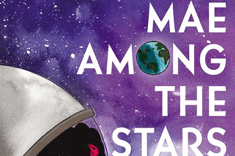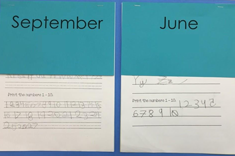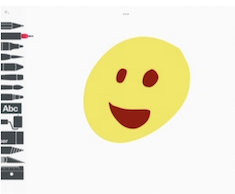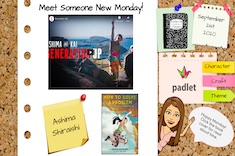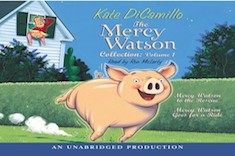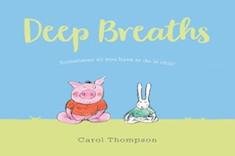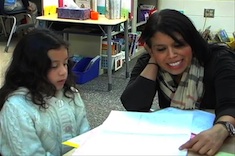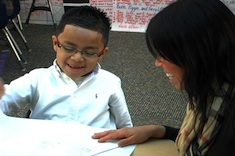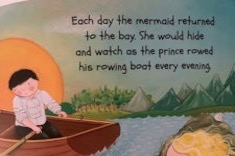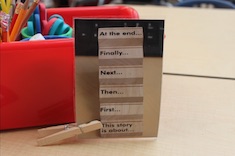2nd
Latest Content
Picture Books that Help Construct a Wider Definition of Home
Stella Villalba compiles a book list about the topic of home. She shares the way she allows students to co-construct their own understanding of home by using picture books that provide a variety of lenses through which to view the topic.
Four Keys to Making Workshop Work
Bitsy Parks reminds us of four key components of running a workshop and offers advice for making workshop work.
Bring In the School Year Like a Grandma
Julie Johnson reflects on how to help students know they belong and are valued in a classroom community.
One Instructional Strategy Changes a Reading Community: Status of the Class
Mandy Robek reminds us of the power of a status of the class to build a reading community.
A Roving Student Conferrer
Tammy Mulligan encourages students to support their peers as writers by being a “roving student conferrer.” When we enable students to take on the role of the teacher, it helps solidify what they know, as well as take pride in their writing skills.
Reasons to Launch Writer’s Notebooks with Primary Writers
Mandy Robek shares keys to knowing when to launch writer’s notebooks with primary writers.
Supports for Our Youngest Writers
Cathy Mere identifies ways to support our youngest writers.
Offering Playful Choice to Show Learning
Tammy Mulligan shares her quick thinking when students are bored with book clubs and reminds us all of the importance of offering playful choice for students to show their learning.
Mother Language Day and Tradition Presentations
Bitsy Parks shares special events that help students widen their scope of acceptance and appreciation for the differences among us.
Finding a Way to Make Heterogeneous Grouping a Reality
Tammy Mulligan shares the vulnerable process of forming heterogeneous groups for book discussions.
A Complete Circle: Identity, Growth, and Community
Bitsy Parks offers key end-of-the year activities that allow students to reflect and notice their identities, growth, and community as readers and writers.
Importance of Talk in Writing Workshop
Julie Johnson reminds us of important mindsets to adopt to allow students the space and permission to talk while composing. When students talk as writers, they have opportunities to create new understandings, build relationships, and validate each other.
Writing Work Plans
Brian Sepe empowers students to make their own plans during writing workshop.
Online Routines to Create Energetic Reading Communities
Melissa Quimby shares online routines to strengthen the class reading community.
Assessing Students Online: Small and Powerful Moves
Tammy Mulligan shares small and mighty moves when assessing students online.
Small-Group Instruction: Bookmaking
Brian Sepe shares one of his favorite activities for small groups of young learners: making books together.
Book Series Joy
Bitsy Parks shares the way a series study enriches the reading lives of students and serves as an intervention to help readers grow.
Supporting Students as They Exit Intervention with Series Books
Tara Barnett and Kate Mills write about the power of series books in helping young readers build skills and independence as they exit intervention programs.
Interactive Read Aloud in Second Grade
Jen Court completes an interactive read aloud in a second-grade classroom.
Picture Books for Mental Wellness
Mandy Robek learns a lot about worry from her daughter, and discovers a treasure trove of picture books to promote mental wellness and help students cope with difficult emotions.
First-Grade Conference: Information Writing
Stella Villalba confers with Esmeralda about her information writing on blue jays.
Letting Students Organize Informational Books
Mandy Robek is a little nervous about setting her students loose to organize informational texts, but she couldn’t be more pleased by what they learn in the process.
Out of Sight, Out of Mind: Accountability for Young Writers
Stella Villalba teaches young writers about writer’s craft. So how come evidence of learning from the minilessons isn’t showing up when she confers with her students? She decides to develop a plan to help students link craft lessons with their writing.
Navigating the Interpretation Process
Tammy Mulligan shares how she introduces students to the process of interpreting literature at different grade and developmental levels.
Reassuring Worried Children with Picture Books
Mandy Robek learns a lot about worry from her daughter, and at the same time discovers a treasure trove of children’s books to help students overcome worries.
Making Paper Packets for Distance Learning
Tara Barnett and Kate Mills write about the challenge of creating meaningful print-based packages of materials for students who don’t have internet access for remote learning.
First Grade ELL Conference: Writing and Pop Culture
Stella Villalba confers with first grade English language learner Eric about his writing on angry birds, with Esmeralda also sharing advice.
Remembering the Big Picture in Reading Assessments
Kate Mills notes her own miscues in reading a bedtime story to her young children, and thinks about what that means for analyzing the running records of readers in primary classrooms.
Teaching Transition Words
Tara Barnett and Kate Mills work with a second-grade team to think through how best to teach transition words during a fairy tale unit, especially to students who are English learners.
30-Second Pair-Share
Sean Moore leads his second graders in a quick pair-share to help everyone reflect on what they learned during independent reading.
Browse Content By
Type
Category
- Assessment Tools
- Big Fresh Archives
- Booklists
- Choice Numeracy
- Classroom Design
- Common Core
- Community Building
- Conferring
- Content Literacy
- Digital Literacy
- English Language Learners
- Equity
- Family Relations
- Free Samples
- Guiding Groups
- Leadership
- Literacy Coaches
- Mentor Texts
- Minilessons
- New Teacher Mentors
- Podcasts
- Poetry
- Quote Collections
- Reading Strategies
- Self Care
- Struggling and Striving Learners
- Talking and Listening
- Teacher Study Groups
- Teaching Reading
- Teaching Writing
- Word Study and Vocabulary
Author
- Melissa Quimby
- Nawal Qarooni
- Gwen Blumberg
- Julie Cox
- The Lead Learners
- Hannah Tills
- Josie Stewart
- Ruth Metcalfe
- Mallory Messenger
- Becca Burk
- Jodie Bailey
- Vivian Chen
- Mary Brower
- Tiffany Abbott Fuller
- Stephanie Affinito
- Ruth Ayres
- Leigh Anne Eck
- Heather Fisher
- Shari Frost
- Julie Johnson
- Suzy Kaback
- Gigi McAllister
- Shirl McPhillips
- Melanie Meehan
- Cathy Mere
- Debbie Miller
- Tara Barnett and Kate Mills
- Tammy Mulligan
- Dana Murphy
- Bitsy Parks
- David Pittman
- Brenda Power
- Heather Rader
- Matt Renwick
- Mandy Robek
- Christy Rush-Levine
- Gretchen Schroeder
- Jen Schwanke
- Brian Sepe
- Katherine Sokolowski
- Stella Villalba
- Jennifer Vincent
Grade Level
Choice Literacy Membership
Articles
Get full access to all Choice Literacy article content
Videos
Get full access to all Choice Literacy video content
Courses
Access Choice Literacy course curriculum and training



